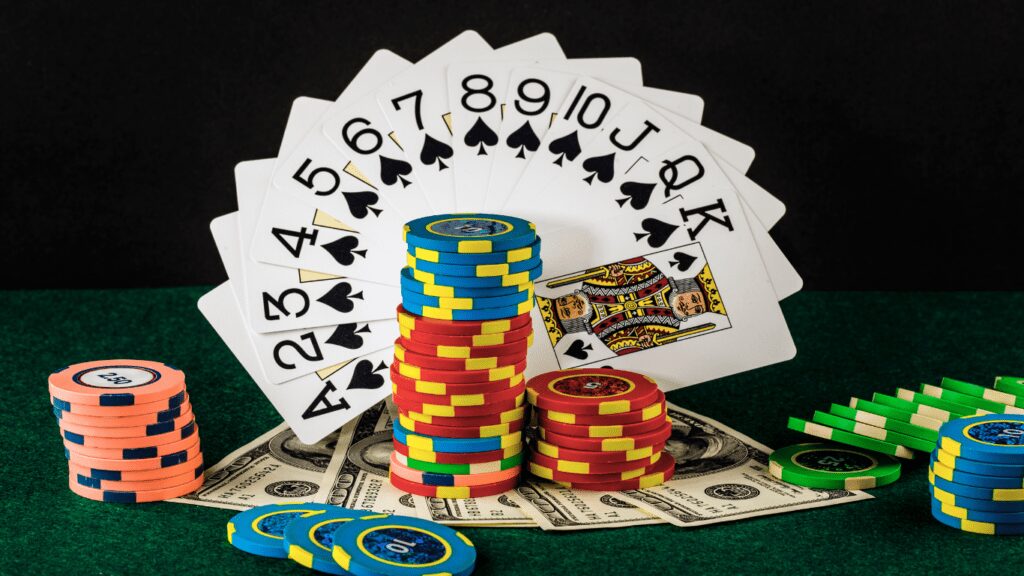We’ve all been there—those moments when a losing streak shakes your confidence and leaves you questioning your strategy. It’s frustrating, even discouraging, but it’s not the end of the road. Losing streaks happen to everyone, and how you handle them can make all the difference in bouncing back stronger.
The key to recovering lies in resetting both your bankroll and your mindset. It’s not just about the numbers; it’s about regaining clarity and control. With the right approach, you can turn a tough stretch into an opportunity to refine your game and come back with renewed focus. Let’s talk about how to get back on track, step by step.
Understanding a Losing Streak
Losing streaks happen to everyone, regardless of skill level or experience. Identifying patterns and understanding their effects can help regain control and make better decisions.
Identifying the Causes
I start by analyzing my recent decisions, focusing on:
- strategy
- preparation
- circumstances
Common causes include poorly planned strategies, distractions during gameplay, or overconfidence. External factors, like unpredictable outcomes or unfavorable conditions, also contribute. For example, in poker, poor hand distribution over multiple games might lead to losses despite solid decision-making. Tracking actions and identifying consistent mistakes provide clarity.
Recognizing the Emotional Impact
A losing streak often triggers frustration, self-doubt, or anxiety. I typically feel demotivated or more inclined to take unnecessary risks, which clouds judgment. For instance, chasing losses after consecutive defeats often leads to further errors. Recognizing these emotions allows better management of reactions and a more disciplined approach.
Resetting Your Bankroll

Rebuilding after a losing streak begins with taking control of your financial resources. A structured approach prevents further losses and helps regain stability.
Assessing the Damage
I start by reviewing the total amount lost during the streak. This includes documenting every loss to understand how much of my bankroll is affected. I evaluate the size of my initial bankroll, the specific losses, and any deviations from my usual practices. By analyzing these details, I recognize patterns and identify mistakes.
Setting a Realistic Budget
Once I determine the impact, I establish a new budget that aligns with my current financial situation. I allocate only what I can afford to lose without affecting essential expenses. For example, I might designate a fixed percentage of my monthly income as a starting point. This realistic approach creates a sustainable foundation for recovery.
Implementing a Bankroll Management Strategy
To sustain long-term progress, I outline a precise bankroll management strategy. I define session limits, set a maximum loss threshold, and identify the optimal amount to risk per play. For instance, I might limit bets to 1-2% of my adjusted bankroll per round. Consistency in sticking to these limits ensures that I minimize risks and maintain better control moving forward.
Rebuilding Your Mindset
Regaining a strong mindset after a losing streak is essential for sustainable recovery. Staying disciplined, learning from past experiences, and maintaining a long-term perspective help foster growth and confidence.
Practicing Emotional Discipline
- Controlling emotions during losses keeps decision-making rational and focused.
- I prioritize maintaining composure by acknowledging frustration without acting on it.
- Deep breathing exercises and short breaks between sessions reduce stress and emotional impulses.
- Tracking emotional responses to specific triggers helps me recognize and manage patterns that could harm my judgment.
Learning from Past Mistakes
Analyzing mistakes objectively identifies areas for improvement. I review play history and decisions made during losses, focusing on missteps like deviating from my strategy or overextending during unfavorable conditions. Instead of dwelling on errors, I refine my approach by implementing new techniques and adjusting strategies to avoid repeating the same errors.
Focusing on Long-Term Goals
Shifting focus to achievable objectives strengthens motivation and direction. I set specific, measurable goals like recovering a set percentage of my losses or improving key performance metrics by a defined timeline. Breaking these goals into smaller steps creates a sense of progress, ensuring short-term setbacks don’t overshadow long-term success.
Strategies to Avoid Future Losing Streaks
Avoiding losing streaks requires consistent effort in improving skills, maintaining discipline, and making rational decisions. By adopting effective strategies, I can minimize risks and enhance long-term performance.
Developing Stronger Skills
Improving skills enhances decision-making and boosts confidence. I focus on identifying weaknesses through reviewing past performances and studying patterns behind losses. Practicing consistently in controlled settings sharpens abilities and limits errors. Leveraging educational resources, like strategy guides or tutorials, expands knowledge and keeps me updated with evolving tactics.
Setting Clear Limits
Establishing limits ensures I manage risks effectively. I set predefined session budgets and identify a maximum loss threshold to prevent overextension. Allocating a specific percentage of my bankroll for each session helps distribute risks evenly. Tracking spending consistently ensures adherence to these boundaries.
Knowing When to Take a Break
Stepping away prevents emotional decisions and mental fatigue. I pause activity if frustration or anxiety develops to reassess my mindset. Scheduling regular breaks during longer sessions maintains focus and energy. Monitoring my emotional state ensures decisions stay disciplined and rational.


 As co-founder of CasinoMastermindx. Cecilla Pricetalker leads the vision and strategy behind the platform’s tech-focused content. With a deep understanding of casino innovation, software engineering, and iGaming trends, she ensures every piece reflects accuracy, innovation, and integrity. Cecilla’s leadership and technical insight make CasinoMastermindx.com a trusted source for forward-thinking gaming intelligence.
As co-founder of CasinoMastermindx. Cecilla Pricetalker leads the vision and strategy behind the platform’s tech-focused content. With a deep understanding of casino innovation, software engineering, and iGaming trends, she ensures every piece reflects accuracy, innovation, and integrity. Cecilla’s leadership and technical insight make CasinoMastermindx.com a trusted source for forward-thinking gaming intelligence.
